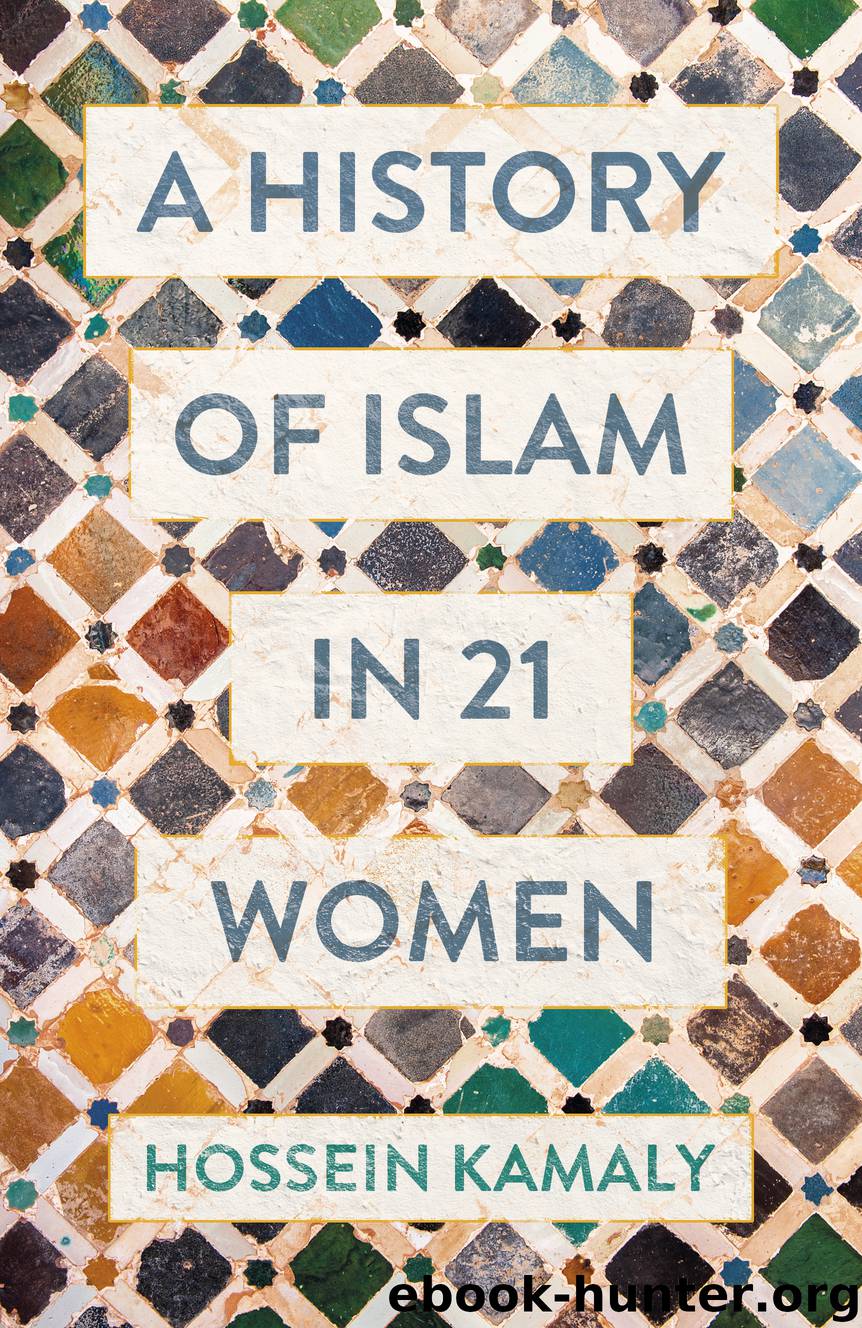A History of Islam in 21 Women by Hossein Kamaly;

Author:Hossein Kamaly;
Language: eng
Format: epub
Publisher: Lightning Source Inc. (Tier 2)
Published: 2019-09-03T16:00:00+00:00
14
Tahereh
(ca. 1814–1852)
Heroine or Heretic?
The dawn of modernity at the beginning of the nineteenth century produced a new complex of political, economic, and religious challenges, conflicts and controversies for Muslims as for everyone else. Tahereh (ca. 1814–1852) lived in those extraordinary times and left an extraordinary legacy of her own. Some denounce her as an apostate; others celebrate her as a saint. To this day her story remains entangled with religious controversies from nineteenth-century Iran.
Tahereh was born in or around 1814 in the Iranian city of Qazvin. Her father named her Fatemeh; the name of the Prophet’s beloved daughter that was and remains highly popular among Shia Muslims. He also gave her the byname of Zarrin-Taj, “the girl with a golden crest.” The name Tahereh, used here, is one of the handful of names and titles she received throughout her short life.
Qazvin, once the Safavid capital in the sixteenth century, remained a bastion of Shia Islam during the nineteenth century. The Safavids had gone, and after a lull of a few decades a new dynasty had taken over – the Qajars, who now ruled from Tehran. A mere hundred miles away from the new capital, Qazvin still thrived as a center of commerce and a citadel of religious learning. As Shia religious scholars, or ulama, Tahereh’s family upheld Qazvin’s reputation as “the Abode of the Faithful.”
At the time of Tahereh’s birth, a momentous debate divided the faithful living in Qazvin, especially within the ranks of the ulama. Her family was deeply involved. The controversy centred on the proper way of leading a faithful life as a Shia Muslim in a rapidly changing cultural milieu. So long as Prophet Muhammad lived and delivered the divine message, his conduct had clarified the meaning and implications of faith. According to the form of Shia Islam practiced in Iran, after the Prophet the twelve Imams continued to deliver divine law. Their statements and actions were infallible. However, the twelfth Imam, called the Mahdi, had gone into occultation (become hidden from view) as far back as the ninth century CE, and was to return at the end of time. Who spoke for God in his absence? At the turn of the nineteenth century the question had acquired new urgency, if only because society seemed to be changing as never before.
In Tahereh’s town, one side of the debate stressed the necessity of centralizing religious authority. To have faith and to live faithfully meant following in the footsteps of living exemplars of faith who knew the law of God: how to pray; how to fast; what to eat and not eat; and what professions to choose and which ones to abandon. For everything in life there had to be a ruling that the faithful ought to follow. The advocates of this view called for the training of a hierarchy of specialists in foundational matters, or osul. This was known as the Osuli position. Solid training in the fundamentals of how to live paved the way for exercising expert reasoning, or ijtihad, in working out the details of divine law.
Download
This site does not store any files on its server. We only index and link to content provided by other sites. Please contact the content providers to delete copyright contents if any and email us, we'll remove relevant links or contents immediately.
| Military | Political |
| Presidents & Heads of State | Religious |
| Rich & Famous | Royalty |
| Social Activists |
Waking Up in Heaven: A True Story of Brokenness, Heaven, and Life Again by McVea Crystal & Tresniowski Alex(37676)
Empire of the Sikhs by Patwant Singh(22978)
We're Going to Need More Wine by Gabrielle Union(18972)
Hans Sturm: A Soldier's Odyssey on the Eastern Front by Gordon Williamson(18486)
Leonardo da Vinci by Walter Isaacson(13189)
The Radium Girls by Kate Moore(11930)
Tools of Titans by Timothy Ferriss(8222)
Educated by Tara Westover(7945)
How to Be a Bawse: A Guide to Conquering Life by Lilly Singh(7394)
Permanent Record by Edward Snowden(5743)
The Last Black Unicorn by Tiffany Haddish(5558)
The Rise and Fall of Senator Joe McCarthy by James Cross Giblin(5230)
Promise Me, Dad by Joe Biden(5088)
The Wind in My Hair by Masih Alinejad(5034)
A Higher Loyalty: Truth, Lies, and Leadership by James Comey(4848)
The Crown by Robert Lacey(4728)
The Iron Duke by The Iron Duke(4293)
Joan of Arc by Mary Gordon(4016)
Stalin by Stephen Kotkin(3879)
